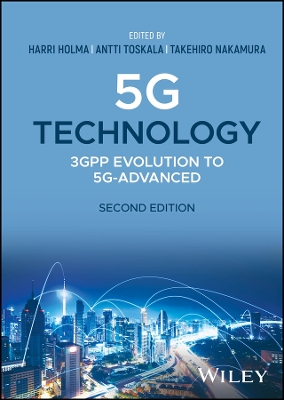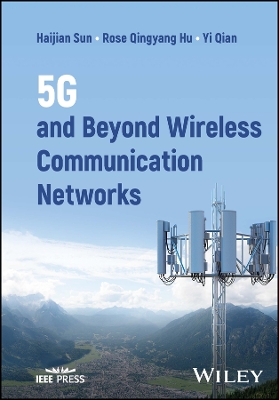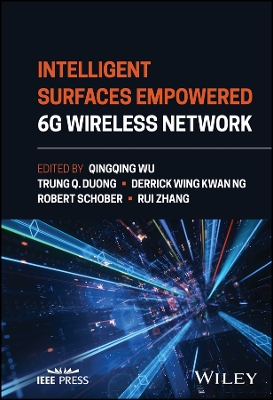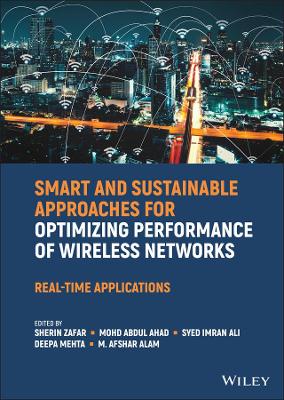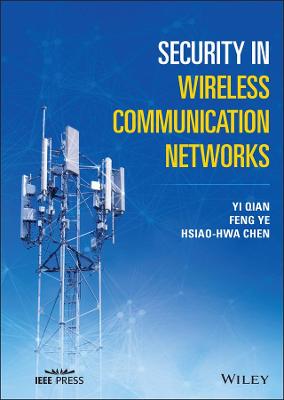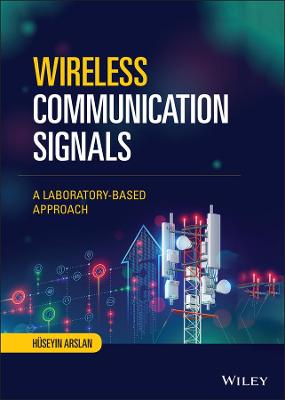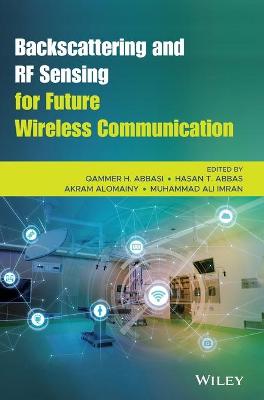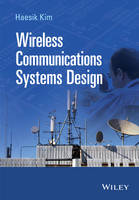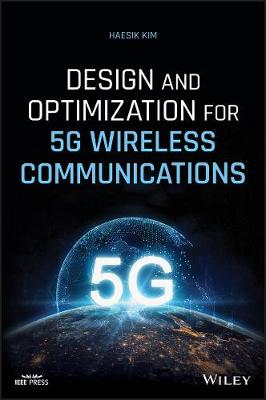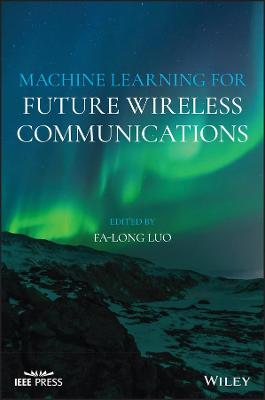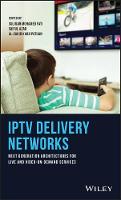Fog for 5G and IoT
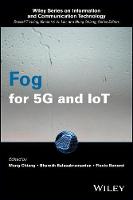 -15%
portes grátis
-15%
portes grátis
Fog for 5G and IoT
Bonomi, Flavio; Balasubramanian, Bharath; Chiang, Mung
John Wiley & Sons Inc
06/2017
304
Dura
Inglês
9781119187134
15 a 20 dias
624
Introduction 1
Bharath Balasubramanian, Mung Chiang, and Flavio Bonomi
I.1 Summary of Chapters 5
I.2 Acknowledgments 7
References 8
I Communication and Management of Fog 11
1 ParaDrop: An Edge Computing Platform in Home Gateways 13
Suman Banerjee, Peng Liu, Ashish Patro, and Dale Willis
1.1 Introduction 13
1.1.1 Enabling Multitenant Wireless Gateways and Applications through ParaDrop 14
1.1.2 ParaDrop Capabilities 15
1.2 Implementing Services for the ParaDrop Platform 17
1.3 Develop Services for ParaDrop 19
1.3.1 A Security Camera Service Using ParaDrop 19
1.3.2 An Environmental Sensor Service Using ParaDrop 22
References 23
2 Mind Your Own Bandwidth 24
Carlee Joe-Wong, Sangtae Ha, Zhenming Liu, Felix Ming Fai Wong, and Mung Chiang
2.1 Introduction 24
2.1.1 Leveraging the Fog 25
2.1.2 A Home Solution to a Home Problem 25
2.2 Related Work 28
2.3 Credit Distribution and Optimal Spending 28
2.3.1 Credit Distribution 29
2.3.2 Optimal Credit Spending 31
2.4 An Online Bandwidth Allocation Algorithm 32
2.4.1 Estimating Other Gateways' Spending 32
2.4.2 Online Spending Decisions and App Prioritization 34
2.5 Design and Implementation 35
2.5.1 Traffic and Device Classification 37
2.5.2 Rate Limiting Engine 37
2.5.3 Traffic Prioritization Engine 38
2.6 Experimental Results 39
2.6.1 Rate Limiting 39
2.6.2 Traffic Prioritization 41
2.7 Gateway Sharing Results 41
2.8 Concluding Remarks 45
Acknowledgments 46
Appendix 2.A 46
2.A.1 Proof of Lemma 2.1 46
2.A.2 Proof of Lemma 2.2 46
2.A.3 Proof of Proposition 2.1 47
2.A.4 Proof of Proposition 2.2 48
2.A.5 Proof of Proposition 2.3 49
2.A.6 Proof of Proposition 2.4 49
References 50
3 Socially-Aware Cooperative D2D and D4D Communications toward Fog Networking 52
Xu Chen, Junshan Zhang, and Satyajayant Misra
3.1 Introduction 52
3.1.1 From Social Trust and Social Reciprocity to D2D Cooperation 54
3.1.2 Smart Grid: An IoT Case for Socially-Aware Cooperative D2D and D4D Communications 55
3.1.3 Summary of Main Results 57
3.2 Related Work 58
3.3 System Model 59
3.3.1 Physical (Communication) Graph Model 60
3.3.2 Social Graph Model 61
3.4 Socially-Aware Cooperative D2D and D4D Communications toward Fog Networking 62
3.4.1 Social Trust-Based Relay Selection 63
3.4.2 Social Reciprocity-Based Relay Selection 63
3.4.3 Social Trust and Social Reciprocity-Based Relay Selection 68
3.5 Network Assisted Relay Selection Mechanism 69
3.5.1 Reciprocal Relay Selection Cycle Finding 69
3.5.2 NARS Mechanism 70
3.5.3 Properties of NARS Mechanism 73
3.6 Simulations 75
3.6.1 Erdos-Renyi Social Graph 76
3.6.2 Real Trace Based Social Graph 78
3.7 Conclusion 82
Acknowledgments 82
References 83
4 You Deserve Better Properties (From Your Smart Devices) 86
Steven Y. Ko
4.1 Why We Need to Provide Better Properties 86
4.2 Where We Need to Provide Better Properties 87
4.3 What Properties We Need to Provide and How 88
4.3.1 Transparency 88
4.3.2 Predictable Performance 93
4.3.3 Openness 99
4.4 Conclusions 102
Acknowledgment 102
References 103
II Storage and Computation in Fog 107
5 Distributed Caching for Enhancing Communications Efficiency 109
A. Salman Avestimehr and Andreas F. Molisch
5.1 Introduction 109
5.2 Femtocaching 111
5.2.1 System Model 111
5.2.2 Adaptive Streaming from Helper Stations 114
5.3 User-Caching 115
5.3.1 Cluster-Based Caching and D2D Communications 115
5.3.2 IT LinQ-Based Caching and Communications 118
5.3.3 Coded Multicast 126
5.4 Conclusions and Outlook 130
References 131
6 Wireless Video Fog: Collaborative Live Streaming with Error Recovery 133
Bo Zhang, Zhi Liu, and S.-H. Gary Chan
6.1 Introduction 133
6.2 Related Work 136
6.3 System Operation and Network Model 138
6.4 Problem Formulation and Complexity 140
6.4.1 NC Packet Selection Optimization 140
6.4.2 Broadcaster Selection Optimization 143
6.4.3 Complexity Analysis 144
6.5 VBCR: A Distributed Heuristic for Live Video with Cooperative Recovery 144
6.5.1 Initial Information Exchange 145
6.5.2 Cooperative Recovery 145
6.5.3 Updated Information Exchange 147
6.5.4 Video Packet Forwarding 147
6.6 Illustrative Simulation Results 150
6.7 Concluding Remarks 156
References 156
7 Elastic Mobile Device Clouds: Leveraging Mobile Devices to Provide Cloud Computing Services at the Edge 159
Karim Habak, Cong Shi, Ellen W. Zegura, Khaled A. Harras, and Mostafa Ammar
7.1 Introduction 159
7.2 Design Space with Examples 161
7.2.1 Mont-Blanc 162
7.2.2 Computing while Charging 163
7.2.3 FemtoCloud 164
7.2.4 Serendipity 166
7.3 FemtoCloud Performance Evaluation 168
7.3.1 Experimental Setup 168
7.3.2 FemtoCloud Simulation Results 169
7.3.3 FemtoCloud Prototype Evaluation 173
7.4 Serendipity Performance Evaluation 175
7.4.1 Experimental Setup 175
7.4.2 Serendipity's Performance Benefits 176
7.4.3 Impact of Network Environment 179
7.4.4 The Impact of the Job Properties 182
7.5 Challenges 186
References 186
III Applications of Fog 189
8 The Role of Fog Computing in the Future of the Automobile 191
Flavio Bonomi, Stefan Poledna, and Wilfried Steiner
8.1 Introduction 191
8.2 Current Automobile Electronic Architectures 193
8.3 Future Challenges of Automotive E/E Architectures and Solution Strategies 195
8.4 Future Automobiles as Fog Nodes on Wheels 200
8.5 Deterministic FOG Nodes on Wheels Through Real-Time Computing and Time-Triggered Technologies 203
8.5.1 Deterministic Fog Node Addressing the Scalability Challenge through Virtualization 203
8.5.2 Deterministic Fog Node Addressing the Connectivity and Security Challenges 204
8.5.3 Emerging Use Case of Deterministic Fog Nodes in Automotive Applications-Vehicle-Wide Virtualization 206
8.6 Conclusion 209
References 209
9 Geographic Addressing for Field Networks 211
Robert J. Hall
9.1 Introduction 211
9.1.1 Field Networking 211
9.1.2 Challenges of Field Networking 212
9.2 Geographic Addressing 214
9.3 SAGP: Wireless GA in the Field 215
9.3.1 SAGP Processing 216
9.3.2 SAGP Retransmission Heuristics 217
9.3.3 Example of SAGP Packet Propagation 218
9.3.4 Followcast: Efficient SAGP Streaming 219
9.3.5 Meeting the Challenges 220
9.4 Georouting: Extending GA to the Cloud 221
9.5 SGAF: A Multi-Tiered Architecture for Large-Scale GA 222
9.5.1 Bridging Between Tiers 223
9.5.2 Hybrid Security Architecture 225
9.6 The AT&T Labs Geocast System 225
9.7 Two GA Applications 226
9.7.1 PSCommander 226
9.7.2 Geocast Games 230
9.8 Conclusions 232
References 232
10 Distributed Online Learning and Stream Processing for a Smarter Planet 234
Deepak S. Turaga and Mihaela van der Schaar
10.1 Introduction: Smarter Planet 234
10.2 Illustrative Problem: Transportation 237
10.3 Stream Processing Characteristics 238
10.4 Distributed Stream Processing Systems 239
10.4.1 State of the Art 239
10.4.2 Stream Processing Systems 240
10.5 Distributed Online Learning Frameworks 244
10.5.1 State of the Art 244
10.5.2 Systematic Framework for Online Distributed Ensemble Learning 247
10.5.3 Online Learning of the Aggregation Weights 250
10.5.4 Collision Detection Application 254
10.6 What Lies Ahead 257
Acknowledgment 258
References 258
11 Securing the Internet of Things: Need for a New Paradigm and Fog Computing 261
Tao Zhang, Yi Zheng, Raymond Zheng, and Helder Antunes
11.1 Introduction 261
11.2 New IoT Security Challenges That Necessitate Fundamental Changes to the Existing Security Paradigm 263
11.2.1 Many Things Will Have Long Life Spans but Constrained and Difficult-to-Upgrade Resources 264
11.2.2 Putting All IoT Devices Inside Firewalled Castles Will Become Infeasible or Impractical 264
11.2.3 Mission-Critical Systems Will Demand Minimal-Impact Incident Responses 265
11.2.4 The Need to Know the Security Status of a Vast Number of Devices 266
11.3 A New Security Paradigm for the Internet of Things 268
11.3.1 Help the Less Capable with Fog Computing 269
11.3.2 Scale Security Monitoring to Large Number of Devices with Crowd Attestation 272
11.3.3 Dynamic Risk-Benefit-Proportional Protection with Adaptive Immune Security 277
11.4 Summary 281
Acknowledgment 281
References 281
Index 285
Introduction 1
Bharath Balasubramanian, Mung Chiang, and Flavio Bonomi
I.1 Summary of Chapters 5
I.2 Acknowledgments 7
References 8
I Communication and Management of Fog 11
1 ParaDrop: An Edge Computing Platform in Home Gateways 13
Suman Banerjee, Peng Liu, Ashish Patro, and Dale Willis
1.1 Introduction 13
1.1.1 Enabling Multitenant Wireless Gateways and Applications through ParaDrop 14
1.1.2 ParaDrop Capabilities 15
1.2 Implementing Services for the ParaDrop Platform 17
1.3 Develop Services for ParaDrop 19
1.3.1 A Security Camera Service Using ParaDrop 19
1.3.2 An Environmental Sensor Service Using ParaDrop 22
References 23
2 Mind Your Own Bandwidth 24
Carlee Joe-Wong, Sangtae Ha, Zhenming Liu, Felix Ming Fai Wong, and Mung Chiang
2.1 Introduction 24
2.1.1 Leveraging the Fog 25
2.1.2 A Home Solution to a Home Problem 25
2.2 Related Work 28
2.3 Credit Distribution and Optimal Spending 28
2.3.1 Credit Distribution 29
2.3.2 Optimal Credit Spending 31
2.4 An Online Bandwidth Allocation Algorithm 32
2.4.1 Estimating Other Gateways' Spending 32
2.4.2 Online Spending Decisions and App Prioritization 34
2.5 Design and Implementation 35
2.5.1 Traffic and Device Classification 37
2.5.2 Rate Limiting Engine 37
2.5.3 Traffic Prioritization Engine 38
2.6 Experimental Results 39
2.6.1 Rate Limiting 39
2.6.2 Traffic Prioritization 41
2.7 Gateway Sharing Results 41
2.8 Concluding Remarks 45
Acknowledgments 46
Appendix 2.A 46
2.A.1 Proof of Lemma 2.1 46
2.A.2 Proof of Lemma 2.2 46
2.A.3 Proof of Proposition 2.1 47
2.A.4 Proof of Proposition 2.2 48
2.A.5 Proof of Proposition 2.3 49
2.A.6 Proof of Proposition 2.4 49
References 50
3 Socially-Aware Cooperative D2D and D4D Communications toward Fog Networking 52
Xu Chen, Junshan Zhang, and Satyajayant Misra
3.1 Introduction 52
3.1.1 From Social Trust and Social Reciprocity to D2D Cooperation 54
3.1.2 Smart Grid: An IoT Case for Socially-Aware Cooperative D2D and D4D Communications 55
3.1.3 Summary of Main Results 57
3.2 Related Work 58
3.3 System Model 59
3.3.1 Physical (Communication) Graph Model 60
3.3.2 Social Graph Model 61
3.4 Socially-Aware Cooperative D2D and D4D Communications toward Fog Networking 62
3.4.1 Social Trust-Based Relay Selection 63
3.4.2 Social Reciprocity-Based Relay Selection 63
3.4.3 Social Trust and Social Reciprocity-Based Relay Selection 68
3.5 Network Assisted Relay Selection Mechanism 69
3.5.1 Reciprocal Relay Selection Cycle Finding 69
3.5.2 NARS Mechanism 70
3.5.3 Properties of NARS Mechanism 73
3.6 Simulations 75
3.6.1 Erdos-Renyi Social Graph 76
3.6.2 Real Trace Based Social Graph 78
3.7 Conclusion 82
Acknowledgments 82
References 83
4 You Deserve Better Properties (From Your Smart Devices) 86
Steven Y. Ko
4.1 Why We Need to Provide Better Properties 86
4.2 Where We Need to Provide Better Properties 87
4.3 What Properties We Need to Provide and How 88
4.3.1 Transparency 88
4.3.2 Predictable Performance 93
4.3.3 Openness 99
4.4 Conclusions 102
Acknowledgment 102
References 103
II Storage and Computation in Fog 107
5 Distributed Caching for Enhancing Communications Efficiency 109
A. Salman Avestimehr and Andreas F. Molisch
5.1 Introduction 109
5.2 Femtocaching 111
5.2.1 System Model 111
5.2.2 Adaptive Streaming from Helper Stations 114
5.3 User-Caching 115
5.3.1 Cluster-Based Caching and D2D Communications 115
5.3.2 IT LinQ-Based Caching and Communications 118
5.3.3 Coded Multicast 126
5.4 Conclusions and Outlook 130
References 131
6 Wireless Video Fog: Collaborative Live Streaming with Error Recovery 133
Bo Zhang, Zhi Liu, and S.-H. Gary Chan
6.1 Introduction 133
6.2 Related Work 136
6.3 System Operation and Network Model 138
6.4 Problem Formulation and Complexity 140
6.4.1 NC Packet Selection Optimization 140
6.4.2 Broadcaster Selection Optimization 143
6.4.3 Complexity Analysis 144
6.5 VBCR: A Distributed Heuristic for Live Video with Cooperative Recovery 144
6.5.1 Initial Information Exchange 145
6.5.2 Cooperative Recovery 145
6.5.3 Updated Information Exchange 147
6.5.4 Video Packet Forwarding 147
6.6 Illustrative Simulation Results 150
6.7 Concluding Remarks 156
References 156
7 Elastic Mobile Device Clouds: Leveraging Mobile Devices to Provide Cloud Computing Services at the Edge 159
Karim Habak, Cong Shi, Ellen W. Zegura, Khaled A. Harras, and Mostafa Ammar
7.1 Introduction 159
7.2 Design Space with Examples 161
7.2.1 Mont-Blanc 162
7.2.2 Computing while Charging 163
7.2.3 FemtoCloud 164
7.2.4 Serendipity 166
7.3 FemtoCloud Performance Evaluation 168
7.3.1 Experimental Setup 168
7.3.2 FemtoCloud Simulation Results 169
7.3.3 FemtoCloud Prototype Evaluation 173
7.4 Serendipity Performance Evaluation 175
7.4.1 Experimental Setup 175
7.4.2 Serendipity's Performance Benefits 176
7.4.3 Impact of Network Environment 179
7.4.4 The Impact of the Job Properties 182
7.5 Challenges 186
References 186
III Applications of Fog 189
8 The Role of Fog Computing in the Future of the Automobile 191
Flavio Bonomi, Stefan Poledna, and Wilfried Steiner
8.1 Introduction 191
8.2 Current Automobile Electronic Architectures 193
8.3 Future Challenges of Automotive E/E Architectures and Solution Strategies 195
8.4 Future Automobiles as Fog Nodes on Wheels 200
8.5 Deterministic FOG Nodes on Wheels Through Real-Time Computing and Time-Triggered Technologies 203
8.5.1 Deterministic Fog Node Addressing the Scalability Challenge through Virtualization 203
8.5.2 Deterministic Fog Node Addressing the Connectivity and Security Challenges 204
8.5.3 Emerging Use Case of Deterministic Fog Nodes in Automotive Applications-Vehicle-Wide Virtualization 206
8.6 Conclusion 209
References 209
9 Geographic Addressing for Field Networks 211
Robert J. Hall
9.1 Introduction 211
9.1.1 Field Networking 211
9.1.2 Challenges of Field Networking 212
9.2 Geographic Addressing 214
9.3 SAGP: Wireless GA in the Field 215
9.3.1 SAGP Processing 216
9.3.2 SAGP Retransmission Heuristics 217
9.3.3 Example of SAGP Packet Propagation 218
9.3.4 Followcast: Efficient SAGP Streaming 219
9.3.5 Meeting the Challenges 220
9.4 Georouting: Extending GA to the Cloud 221
9.5 SGAF: A Multi-Tiered Architecture for Large-Scale GA 222
9.5.1 Bridging Between Tiers 223
9.5.2 Hybrid Security Architecture 225
9.6 The AT&T Labs Geocast System 225
9.7 Two GA Applications 226
9.7.1 PSCommander 226
9.7.2 Geocast Games 230
9.8 Conclusions 232
References 232
10 Distributed Online Learning and Stream Processing for a Smarter Planet 234
Deepak S. Turaga and Mihaela van der Schaar
10.1 Introduction: Smarter Planet 234
10.2 Illustrative Problem: Transportation 237
10.3 Stream Processing Characteristics 238
10.4 Distributed Stream Processing Systems 239
10.4.1 State of the Art 239
10.4.2 Stream Processing Systems 240
10.5 Distributed Online Learning Frameworks 244
10.5.1 State of the Art 244
10.5.2 Systematic Framework for Online Distributed Ensemble Learning 247
10.5.3 Online Learning of the Aggregation Weights 250
10.5.4 Collision Detection Application 254
10.6 What Lies Ahead 257
Acknowledgment 258
References 258
11 Securing the Internet of Things: Need for a New Paradigm and Fog Computing 261
Tao Zhang, Yi Zheng, Raymond Zheng, and Helder Antunes
11.1 Introduction 261
11.2 New IoT Security Challenges That Necessitate Fundamental Changes to the Existing Security Paradigm 263
11.2.1 Many Things Will Have Long Life Spans but Constrained and Difficult-to-Upgrade Resources 264
11.2.2 Putting All IoT Devices Inside Firewalled Castles Will Become Infeasible or Impractical 264
11.2.3 Mission-Critical Systems Will Demand Minimal-Impact Incident Responses 265
11.2.4 The Need to Know the Security Status of a Vast Number of Devices 266
11.3 A New Security Paradigm for the Internet of Things 268
11.3.1 Help the Less Capable with Fog Computing 269
11.3.2 Scale Security Monitoring to Large Number of Devices with Crowd Attestation 272
11.3.3 Dynamic Risk-Benefit-Proportional Protection with Adaptive Immune Security 277
11.4 Summary 281
Acknowledgment 281
References 281
Index 285


